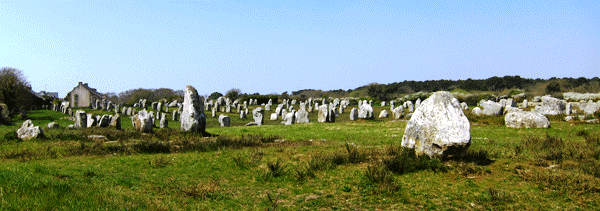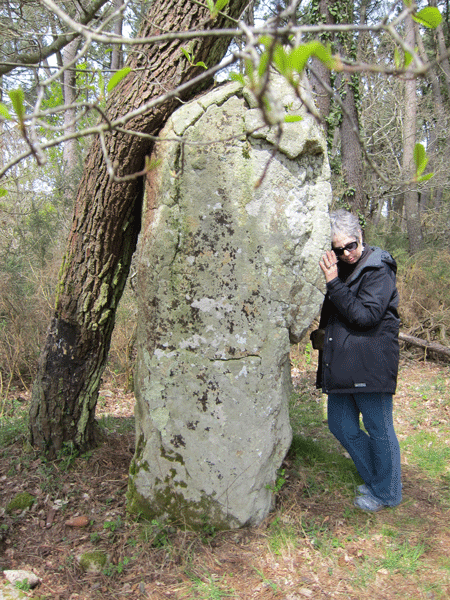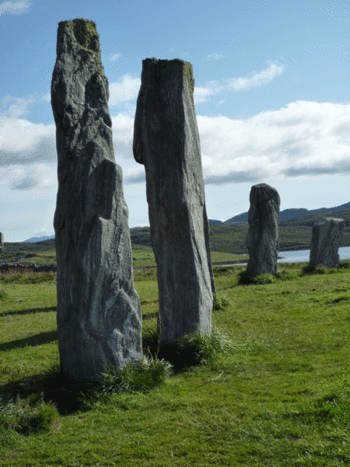words + photos by Elyn Aviva
We drove around a corner and encountered an astounding sight: row after row of standing stones, stretching to the horizon. “Pull over!” I demanded. Barely waiting for Gary, my husband, to stop the car, I opened the door, jumped out, and ran over to the green metal fence that separated the stones from me. I shook my head in disbelief, in awe. So many stones, lined up and going—where? Why? They fit no category I knew: they were an enormous puzzle of countless granite megaliths pointing to the sky, rooted in the earth. Hundreds, thousands of stones lined up in slightly wavering rows that went on for kilometers, as if the stones were frozen in the act of marching—somewhere. What was the point? What did they mean? What were they for? The stones made no response. 
Nowhere in the world has as many megalithic sites as Brittany, and Carnac is in the center of them. The amazing profusion of ancient remains includes isolated standing stones, rows of alignments, earth-covered tumuli, quadrilateral and oval enclosures, and table-like dolmens, each with its own energy and story.
The dolmens with their elaborately engraved interior walls are intriguing, but the 6000-year-old alignments fascinate me. Many of the original stones have been hauled off for re-use in nearby farmhouses and fences, but nearly 3000 menhirs (Breton for standing stones) remain. They are lined up in three sets of slightly undulating rows facing approximately northeast/southwest and extending for kilometers. Starting in the northeast are the Kerlescan alignments, followed by the Kermario alignments, and ending in the southwest with the Le Ménec alignments. The different sets contain from eleven to thirteen rows, and include from approximately 600 to nearly 1200 standing stones. Each set ends in the southwest with an ovoid or quadrilateral stone enclosure (or what remains of one). The cumulative effect of so many stones, so many alignments, extending for such a distance, is awesome.

